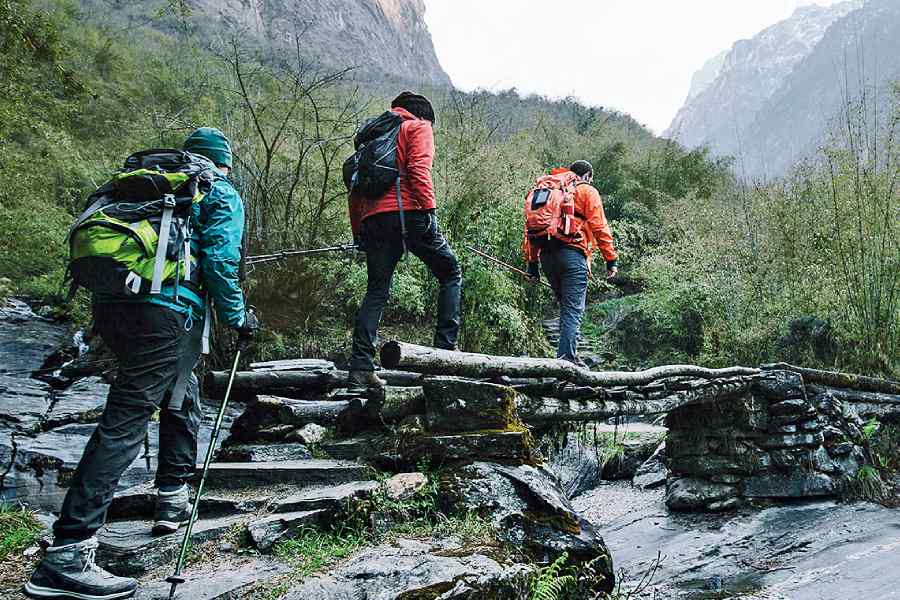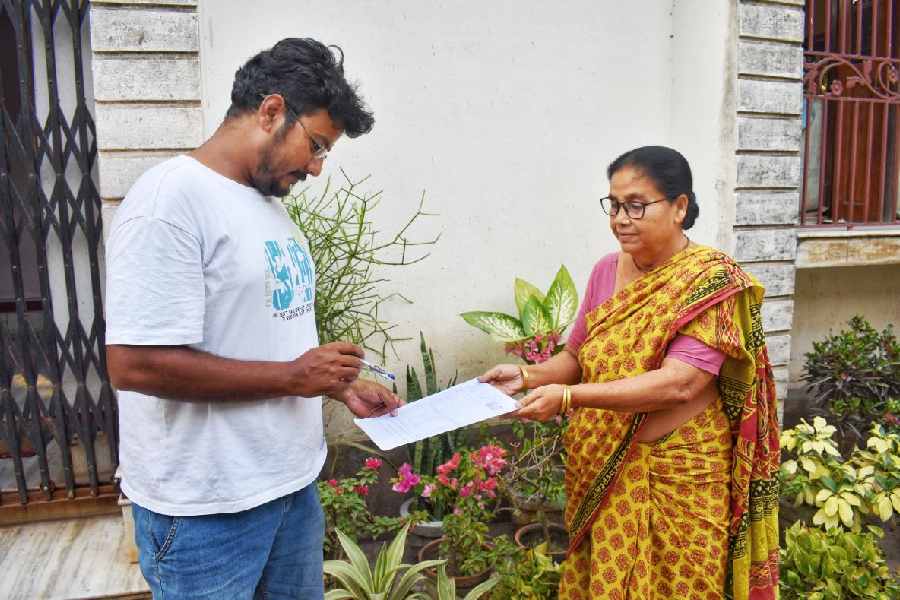The death of a 38-year-old Bengal trekker during his Goechala trip in West Sikkim earlier this week has once again raised concerns about high-altitude trekking — are trekkers adequately prepared for the high terrains?
Suman Debnath, a superintendent with CGST and Customs in Bengal, had reportedly complained of headache, nausea, breathlessness and extreme fatigue before collapsing at Phedang, a point located at 11,800 feet. Debnath did not survive despite assistance from the fellow trekkers. His death follows at least three similar instances recorded last year in Sandakphu, Bengal’s highest point, where tourists reportedly died of altitude-related complications.
With Himalayan treks becoming popular among adventurers, experts say awareness of altitude illness remains worryingly low. They stress that most high-altitude deaths can be prevented with timely acclimatisation. The risk is greater for tourists who ascend over 12,000ft in a single day.
A large number of Sandhakphu-bound tourists take the Landrovers from Manebhanjan and reach Sandhakphu the same day.
"This is dangerous because you are suddenly exposed to the vagaries of high altitude. Ideally, they should spend one night at Tumling or Tonglu before moving further up. This will help the body acclimatise to high-altitude situations," said a guide who accompanies trekkers.
Even then, for a trekker facing health issues, the crucial parts are prompt decision-making and careful monitoring of symptoms.
"The moment you ascend beyond 10,000ft, oxygen level drops sharply. Mind you, this forces your body to work harder. Your heart and respiratory rates will increase, dehydration will occur fast, and sleep will be disturbed," said Dr Ritam Chakraborty, pulmonologist.
He said that while the human body could adapt to thinner air, it requires time. Hence, a rapid ascent is a strict no-no.
“People often assume that age or fitness will protect them. It does not. Altitude affects everyone differently, and symptoms can appear suddenly,” said the doctor, elaborating on the early signs of altitude sickness (see chart).
"Altitude risk shoots up sharply beyond 10,000ft, especially if trekkers ascend faster than 1,600ft a day. How safely someone adapts to the oxygen drop also depends on their cardiopulmonary reserve — the stronger their heart and lungs, the better they can tolerate thin air."
Veteran mountaineers repeatedly emphasise that acclimatisation is a must for any high-altitude ascent.
"Climb high, but sleep low. Ascents need to be gradual; this allows the human body to adjust to new altitudes overnight. One rest day is recommended for every 1,000 metres gained," said Everester Basanta Singha Roy.
However, sources said the emerging trekking groups at times followed tight itineraries to fit travel schedules, leaving little room for proper acclimatisation. Experienced trekkers say there is a culture of “pushing through discomfort” in group settings, which can turn fatal.
“If your body is telling you something, you must listen. Ignoring a headache at 11,000 feet is not like ignoring a headache at sea level,” said Singha Roy (see rules).
The rise in commercial trekking has its own challenges. While reputable organisations carry medical supplies, train their guides in first aid or conduct daily oxygen saturation checks, and so on, many smaller groups cut corners to draw budget-conscious trekkers.
Experts say that during a trip, the organisers must conduct daily health check-ups — pulse, SpO2 and breathing rate. They should carry oximeters, oxygen cylinders and basic high-altitude medicines, apart from securing the service of trained guides in case a high-altitude rescue is needed.
"Most importantly, the operators should have the authority to stop a trekker from ascending if symptoms appear. And they should finalise their group size that is manageable for supervision," said Singha Roy.
Everester Debraj Dutta was direct: "Here, safety begins with honesty. You must not hide symptoms to keep pace with the group or avoid being seen as weak. This is dangerous."
Dutta said trekkers must understand one key point — descending is the only real treatment for acute mountain sickness (AMS), and even a few hundred metres of descent can stabilise a person quickly.
"In this age of social media, we're seeing individuals with limited experience starting trek groups and leading new trekkers on mountain terrains, often with disastrous consequences. These leaders often lack knowledge about altitude sickness, adverse conditions and emergency response, putting trekkers' lives at risk," he said.
"We strongly advise against joining such groups and urge everyone to prioritise safety and expertise when choosing trek leaders."
"Mountains should never be underestimated just because we have easy access to them through tour operators and social media-driven enthusiasm," summed up Dutta.
The latest tragedy is a reminder that Himalayan trails demand discipline and respect for altitude — not bravado. As more beginners head for the high mountains, experts warn that only informed choices and timely caution can prevent such deaths.











